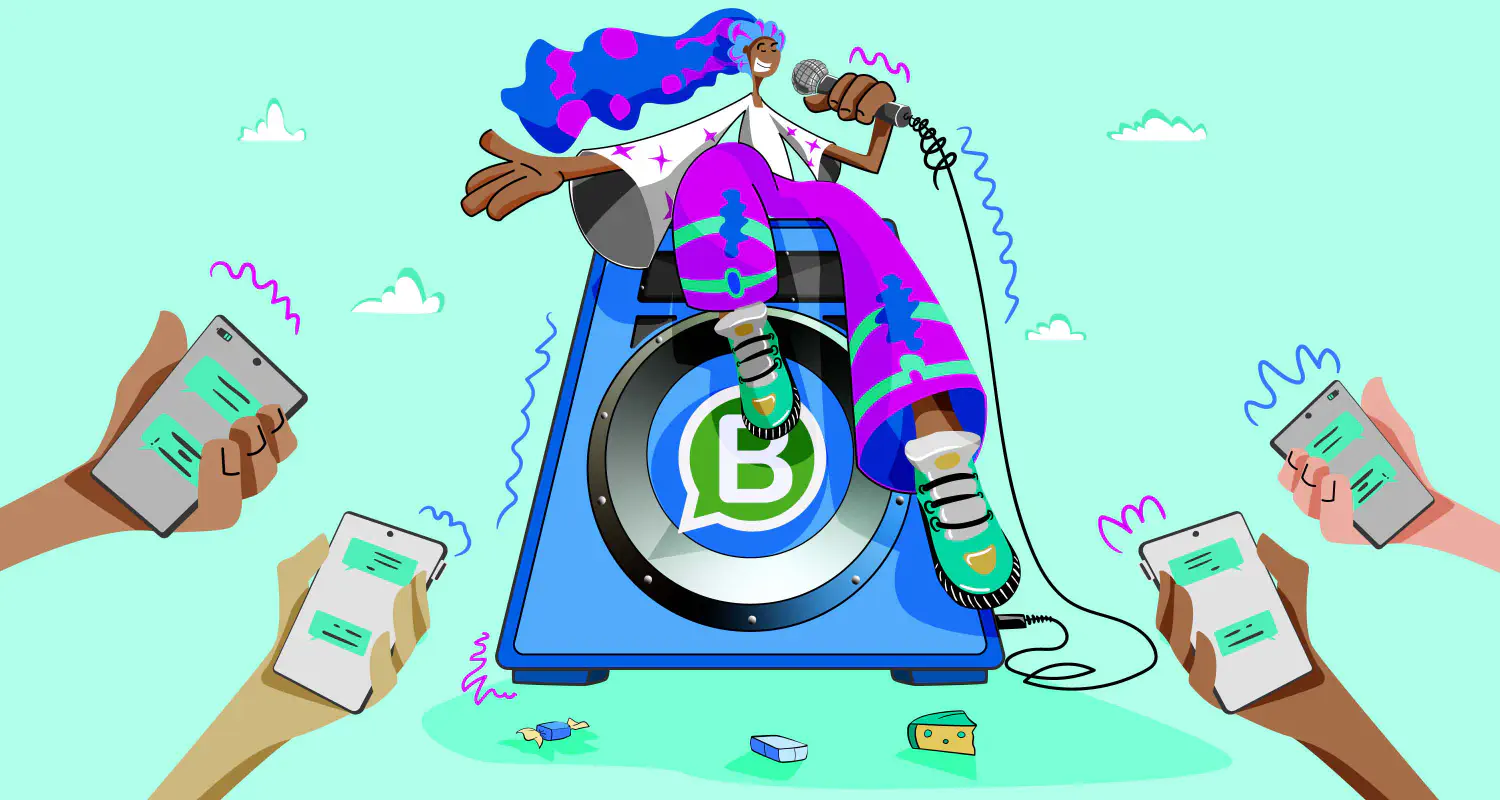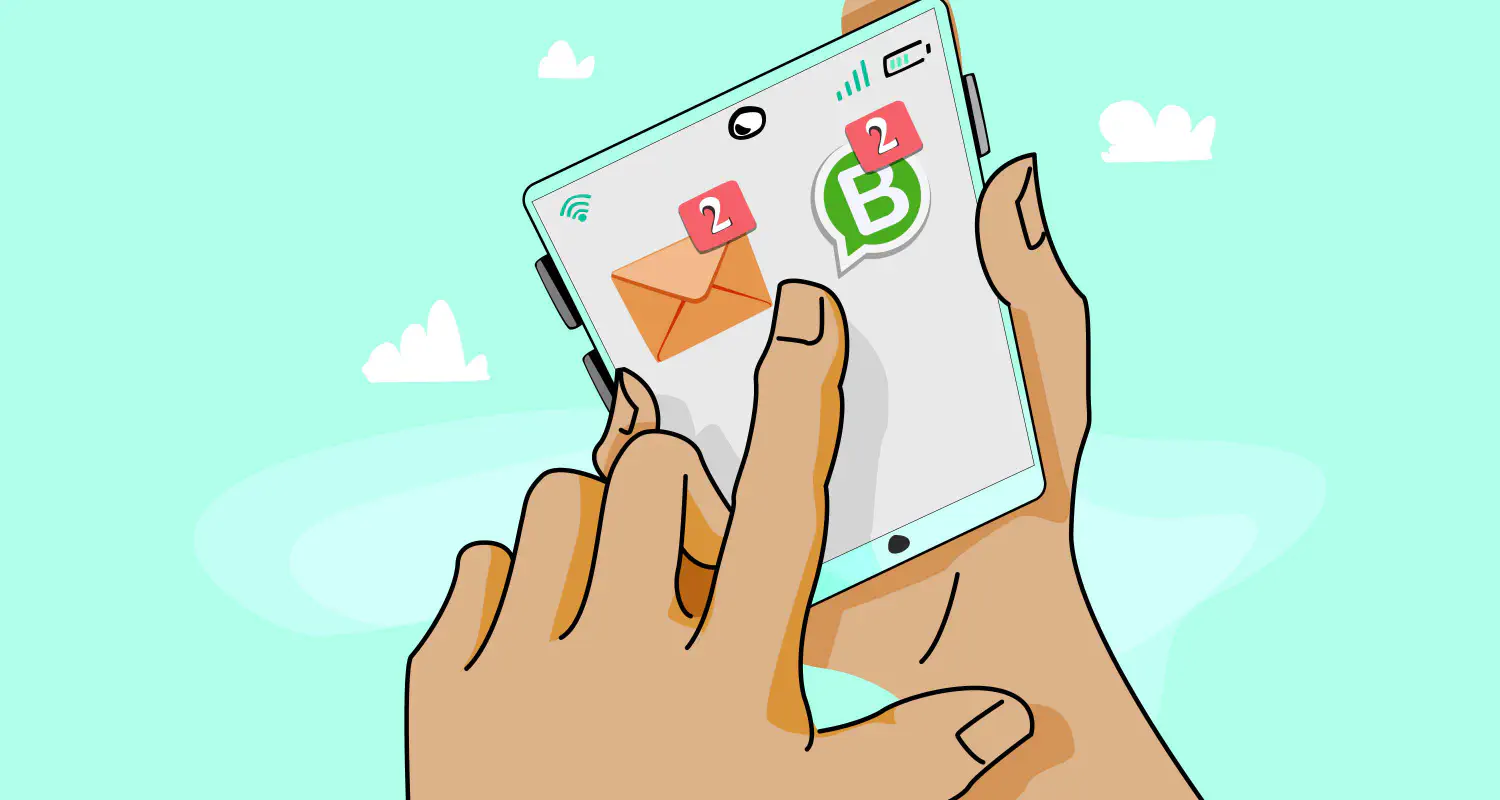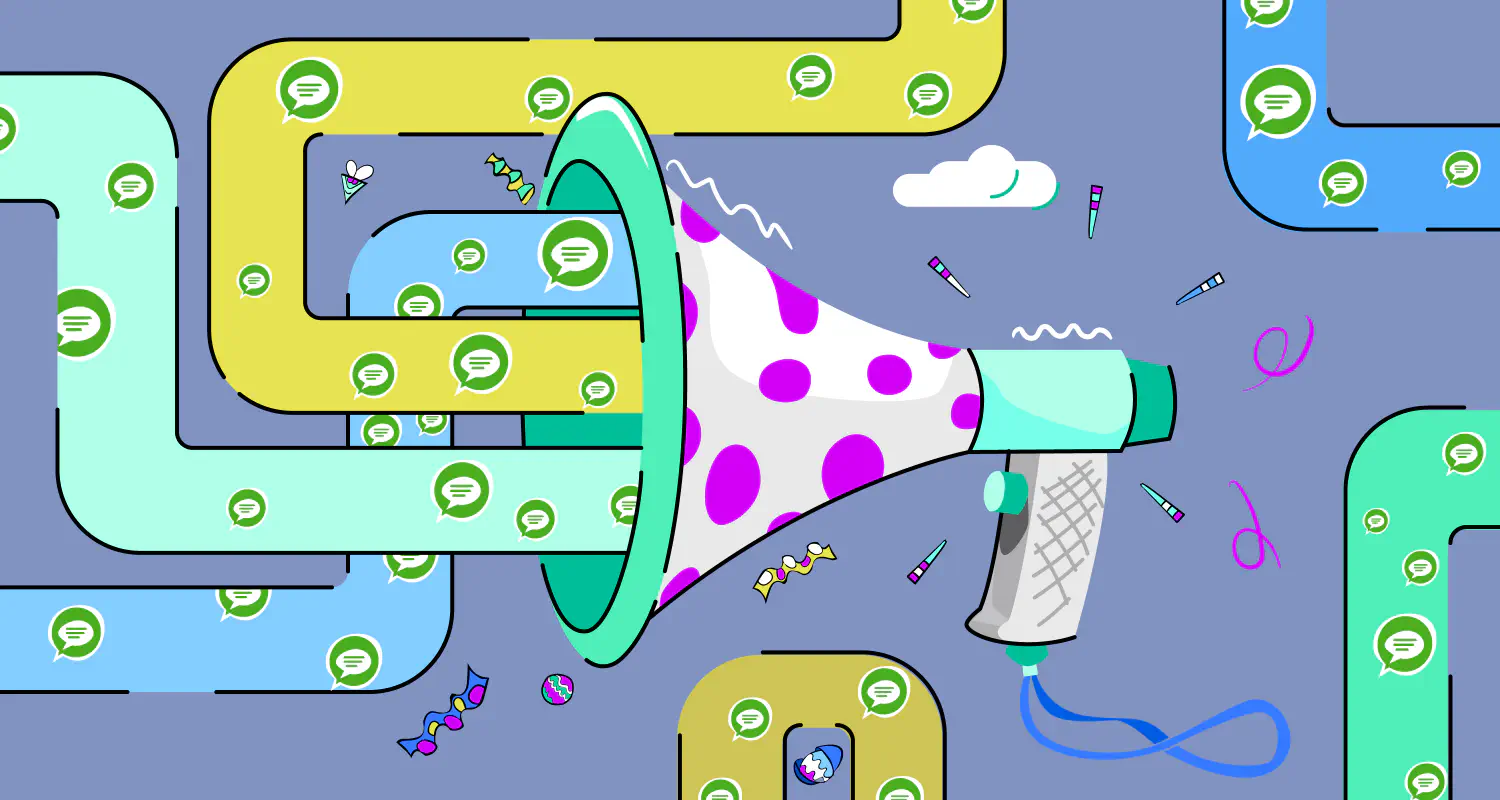How Do Businesses Retain Customers With WhatsApp Newsletters?
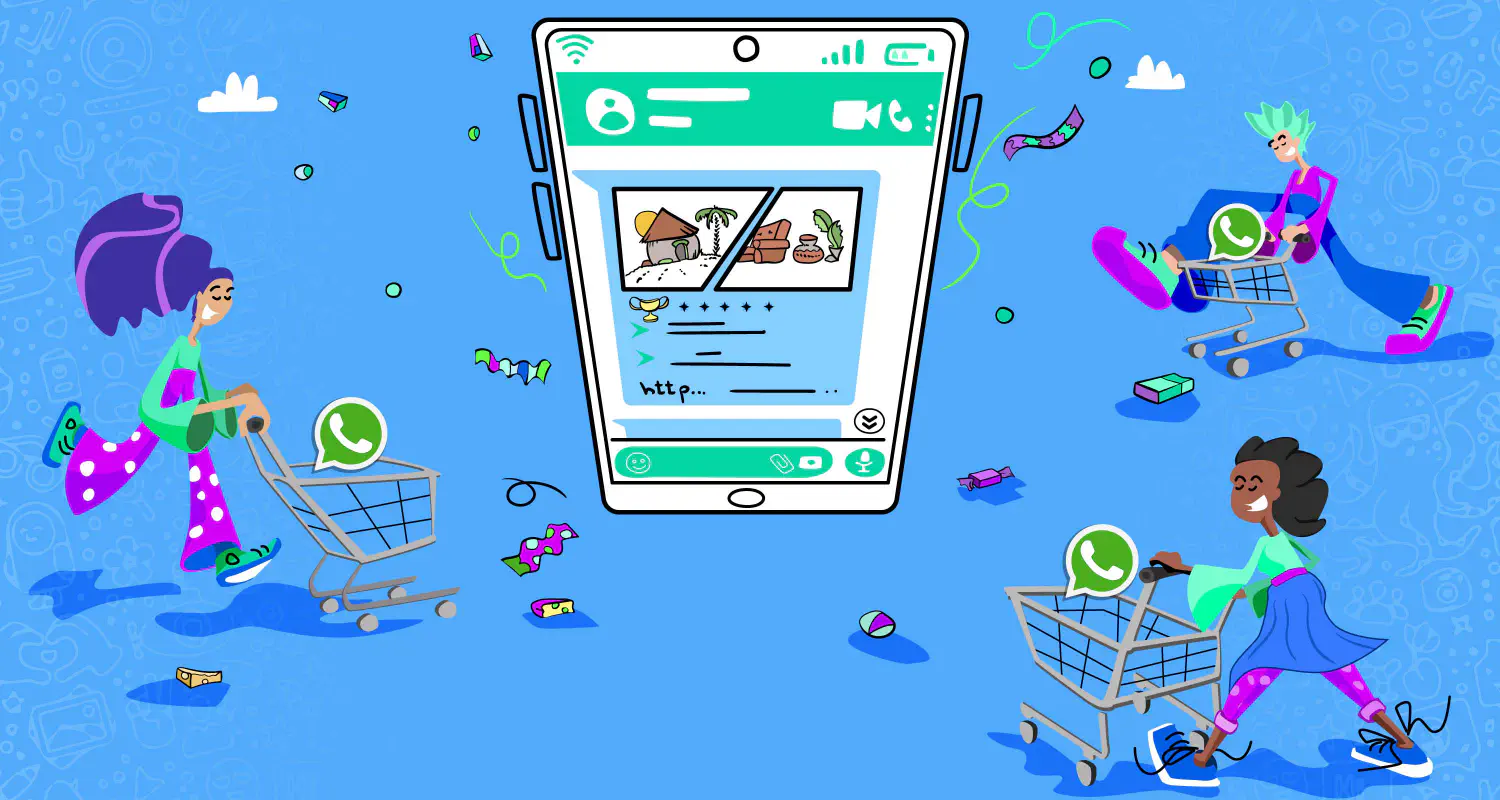
One of the most important goals of marketing is customer engagement and retention. Large businesses invest millions of dollars to stay top of mind by improving brand awareness and visibility, customer service, and the quality of their products and services.
But success at marketing depends on your ability to build and nurture meaningful relationships with an audience of engaged customers. One of the best ways to achieve that goal is to send them regular WhatsApp newsletters.
A WhatsApp newsletter is a periodically-sent message that informs your audience of the latest news, tips, or updates relating to your products or services. This article will show you how WhatsApp newsletters can keep your customers engaged and loyal to your brand, how they can help grow your business, and what you should include in yours.
The problem and background
Retaining your existing customers is way more cost-effective than acquiring new ones. Having a loyal customer base that keeps coming back to you not only guarantees a solid and secure profit but lets you make long-term plans and projections.
Additionally, returning customers spend more than new ones. According to Mckinsey & Company, repeat eCommerce customers spend an average of $52.50 compared to new customers spending an average of $24.50.
So, the big question is, how do you keep your customers engaged, interested and loyal? There are many things you can do to increase customer retention. Better yet, there are many things you must do, if you want to keep your customers coming back to you.
For decades, email newsletters were a go-to channel for engaging loyal customers and keeping them updated with the latest company news, new products, services, deals, and offers. However, as more businesses saw the value of email newsletters, this channel became more and more saturated. People receive at least ten newsletters daily and delete most without reading them. Many end up in the Trash folder without ever being opened. This problem has led businesses to search for new channels to reach out to their customers.
With the introduction of WhatsApp Business and the Broadcast feature, newsletters found a new, highly-effective channel to reach customers. WhatsApp newsletters work just as your traditional email newsletter does, with one big difference. If the average email open rate is 21.5%, WhatsApp users open more than 90% of all messages they receive on the messaging app.
Here are some of the most rewarding reasons and uses marketers send WhatsApp newsletters:
- No spam folder
- Messaging and receiving in real-time. Most customers check the app far more regularly than their email.
- 100% delivery rates and 98% open rates.
- Improved customer service & retention.
The difference between Email newsletters and WhatsApp newsletters
320 billion emails are sent and received every day. The overall average open rate of corporate emails, however, is 22.71%, with a 2.91% click-through rate. That’s less than 3 out of 100 people who will click a call-to-action integrated into an email newsletter.
Compared to that, WhatsApp users are way more responsive. In most countries, messages sent on WhatsApp have over 90% open rate, and yield CTRs between 45 and 60%.
Probably the most significant difference between email and WhatsApp that contributes to the high ROI of WhatsApp newsletters is that they are sent via people’s favorite messaging app and land directly in the users’ chat screen, so they’re almost never ignored. Contrary to that, almost half of all promotional emails end up in spam folders.
Another significant difference between the two marketing tools is the format. Email newsletters tend to have more content in text and media and require more attention and time to read. WhatsApp newsletters, on the other hand, are compact and get right to the point.
If you want to learn more about the difference between these two channels of communication in terms of conversion, read our article: What converts better, email marketing or WhatsApp.
How do WhatsApp newsletters increase engagement?
WhatsApp marketing has the ability to build trust and increase customer engagement rates with minimal effort and low cost.
There are two different ways you can send WhatsApp newsletters, depending on the type of your WhatsApp Business account:
Sending newsletters via the WhatsApp Business app
Sending a newsletter via the Whatsapp Business app is free. The business version of the WhatsApp app was developed to help micro-businesses that want to interact with their customer base and offers a few additional features, unavailable with the regular app:
- Business Profile
- Product Catalog
- Basic automation of away and welcome messages and quick replies
- Broadcasts
With the WhatsApp Business app, you can send newsletters via WhatsApp Broadcast to up to 256 of your customers. If you have more than 256 customers who opted in to receive your bulk messages, you can create an unlimited number of broadcast lists.
A Call-To-Action is a powerful marketing tool you can use to increase engagement with your WhatsApp newsletters. A CTA gives a sense of urgency, particularly when it makes the customers experience FOMO or “the fear of missing out.” A WhatsApp newsletter with the phrase “stay in the loop” emphasizes this contemporary fear, as customers don’t want to be unaware of important information. You can use this kind of call to action for updates, sales, and other promotions.
Sending newsletters via WhatsApp Business Platform/API
The next generation of messaging comes with the WhatsApp Business Platform/API. Businesses using WhatsApp’s Business Platform can connect their business account with a customer communication platform and unlock the full potential of WhatsApp:
- Team inbox
- Advanced automation
- Chatbots
- Reports
- Unlimited broadcasts
- Marketing campaigns, and more
To send a newsletter or initiate any kind of conversation with your customers via the WhatsApp Business Platform/API, you must use message templates. Templates are customizable messages with placeholders for variables or parameters that make the newsletter personalized for each customer.
Before sending a newsletter, the template needs to be approved by WhatsApp, which can take up to 24 hours. If you want to learn more about the dos and don’ts of creating a message template, read our article How to Make Sure WhatsApp Approves Your Message Templates.
If you want to learn more about the different features available within the app and the platform, read The difference between WhatsApp Business app and WhatsApp Business Platform/API.
WhatsApp opt-ins and customer consent
One thing you must know about WhatsApp is that it’s very serious about protecting its 2 billion users from receiving spam messages. If you want to start a conversation with a customer, first you must ask for permission or obtain an opt-in.
You can include a checkbox in your signup form, for example, as a way to ask for your customers’ consent.
If, on the other hand, many customers report your WhatsApp Business account for unwanted or unsolicited messaging, your business may be restricted from using WhatsApp services. To comply with WhatsApp policies, make sure you keep a record of all the opt-ins you’ve received.
If you want to learn more about collecting opt-ins, read our article: Opt-ins, consent, and WhatsApp best practices & policies.
What are the different types of WhatsApp newsletters?
Think about the goals you want to achieve with your newsletters. Are you trying to nurture relationships with your subscribers, boost sales, increase brand awareness, or maybe all of the above? Now, put yourself in the shoes of your customers. What do they want to hear from you?
- Personalized special occasions and offers for holidays, birthdays, or promotions, like Black Friday
- A new product or service announcement
- Exclusive discounts
- Updates about your company and the positive effect they’ll have on your customers
- Event promotion
- How-to guides
- Blog posts
- Behind the scenes
- Customer feedback request
- FAQs
What are the components of a WhatsApp newsletter?
“Short, sweet, and right to the point” is what makes WhatsApp newsletters so effective. To maximize customer engagement, newsletters on WhatsApp can also be programmed to display quick ‘reply’ buttons or CTA buttons that easily lead them to your website or a landing page.
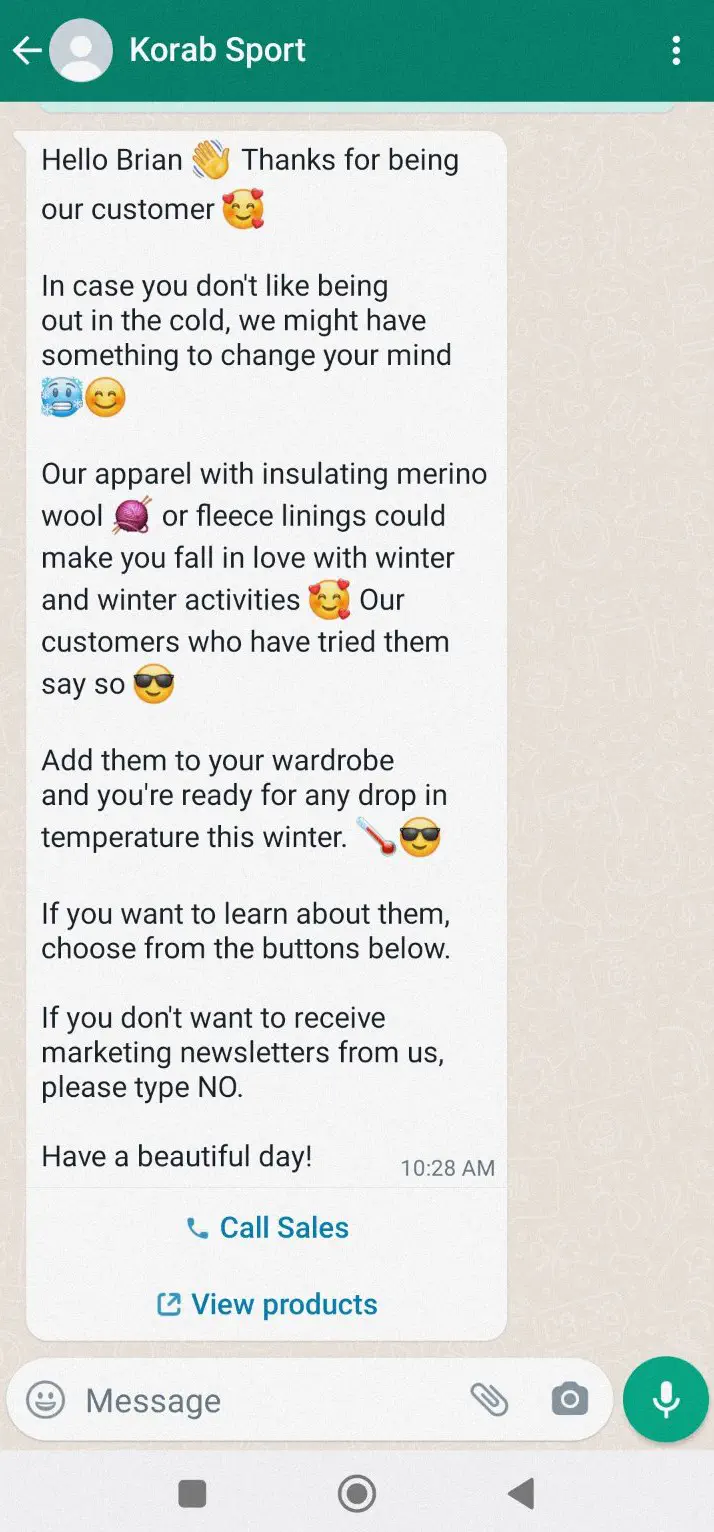
Newsletters on WhatsApp are not limited to text only. You can include a photo, video, and audio files, or any of the common file types.
WhatsApp newsletter best practices
There are a couple of things to keep in mind if you want to provide the best user experience and increase your customer retention rates - always think about the needs of your customers.
Timing
Having an audience of customers who are genuinely interested in your brand, products, and services, may be tempting you to send them a WhatsApp newsletter every day, but you should avoid it. The key is to keep a balanced interval between each newsletter. Too short, and they may opt-out. Too long, and they might forget your business even exists.
- Send a newsletter not more than once a week.
- Determine the time according to the content of your newsletter. If you want to send a reminder about a promotion, you can shorten the time between the newsletters. However, after the promotion has ended, get back to your regular schedule.
- Plan your newsletter schedule and strategy according to your newsletter’s purpose.
Content
Forward-thinking businesses don’t use WhatsApp communication to sell all the time. Customer satisfaction and retention rates depend on building meaningful relationships with customers and providing them with the information they need.
When you deliver relevant content to your customers to help them do their job better or live their life to the fullest, you will see an increase in brand appreciation, which translates into more sales and retention.
Audience
When you develop your WhatsApp newsletter strategy, one thing you can’t overlook is your audience and what might be relevant to them. Sending all types of content to everyone might not be ideal here.
Imagine you run a bookstore and you have an audience of customers who like to read romantic novels. Would it be effective to send them a newsletter to promote a new psychological thriller available in your store? Probably not.
That’s why it’s good to do the extra work at the beginning. By categorizing your customers into different broadcast lists, you can always target the right people with the right content.
Performance
If you are using WhatsApp Business Platform/API connected to a customer communication platform like Rasayel, you can see how your newsletters are doing in terms of delivery rate, open rates, and conversions. These insights can help you plan and adjust future newsletters and campaigns to improve and maximize results.
What will the cost be like?
The cost of WhatsApp Business app
Sending newsletters with the WhatsApp Business app is free, but the app is lacking many of the features available with the WhatsApp Business Platform/API. The broadcast list you’d use can have up to 256 contacts and only the customers that have your number saved on their phones receive it. You can’t include any of the interactive elements in your newsletter, such as quick replies and CTA buttons. Also, the WhatsApp Business app provides only the most basic statistics, such as how many messages are sent, delivered, read, and received. More detailed analytics are not available.
The cost of WhatsApp Business Platform/API
The WhatsApp Business Platform/API, on the other hand, lets you run a newsletter campaign at a much higher level. When you connect the API to a customer communication platform like Rasayel, you can use interactive message templates, advanced automation and chatbots, a shared team inbox, detailed analytics, and more.
To use WhatsApp Business Platform, you have to go through third-party solution providers, known as WhatsApp Business Solution Providers. These BSPs offer different features and charge different rates for the service. If you want to learn more about the different providers, the features they offer and their pricing, these articles can help:
- Comparison of WhatsApp Business Solution Providers (BSPs)
- The Ultimate Guide to WhatsApp Business API Pricing
- How to Get Access to the WhatsApp Business API for Your Business
The cost of messaging with WhatsApp Business Platform/API
Once you start messaging your customers, WhatsApp will charge you per conversation, which includes all messages delivered in a 24-hour session. The rates for conversations vary by market. Charges for conversations are based on the country code of the customers and are different for user-initiated and business-initiated conversations.
The first 1,000 conversations each month are free. If your WhatsApp Business account has multiple numbers attached, the 1000 free conversations are shared between all your numbers. The free tier is refreshed monthly.
The cost of using a customer communication platform
The WhatsApp Business Platform/API doesn’t come with a user interface. You’ll need a communication platform built for WhatsApp, like Rasayel. Rasayel has three pricing models starting from $100 per month and a 14-day free trial for all plans.
Try it now for free.
Conclusion
Whether you have lists of subscribers, previous customers, or prospects, WhatsApp newsletters are a great tool to drive audience engagement and increase customer retention. No matter if you use the WhatsApp Business app, or take advantage of all the features available with WhatsApp Business Platform/API, your effort to stay in touch with your customers will pay off in the long run.
If you’d like to learn more about how WhatsApp can help you grow your business, please reach out to us on WhatsApp at +13024070488
We also offer a free consultation session where we go through your use case, answer any questions you have about WhatsApp, and help you build a strategy to make the best out of the platform. Book a call with us below. We’d love to speak with you:
For Europe, the Middle East, and Africa
For North and South America

Yasser is a content editor and writer who enjoys exploring innovative tech ideas in B2B SaaS and writing about them.
When he’s not writing stories, you’ll find him gaming, traveling, binge watching some random series, or just relaxing by the beach in Alexandria.

